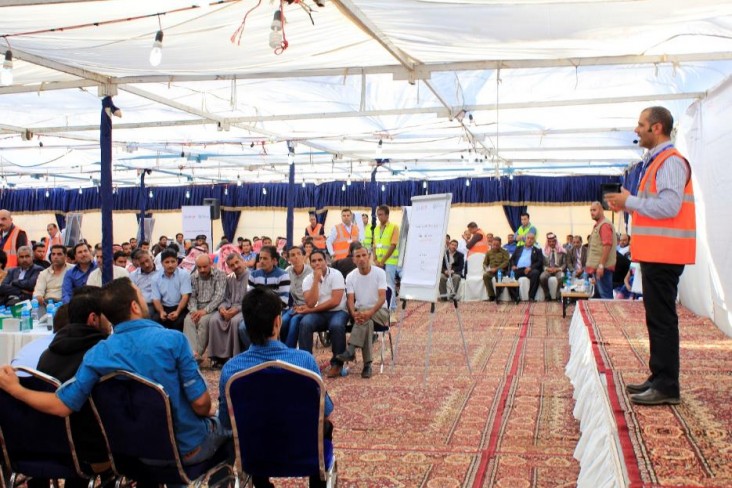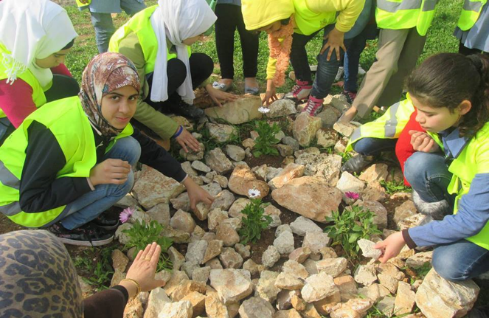Speeches Shim
USAID Community Engagement Project
BACKGROUND
Jordan plays a critical role as a lynchpin of stability in the Middle East. Over the years, Jordan has effectively absorbed regional shocks and offered refuge to successive waves of refugees from neighboring states. Most recently, Jordan absorbed over 600,000 Syrian refugees—close to 10% of its total population. Such a rapid increase in population has led to significant challenges, testing the absorptive capacity of Jordanian communities and government institutions alike.
While Jordan’s northern governorates are dealing with the effects of the Syrian crisis, the southern governorates have historically posed threats to the Kingdom’s internal stability. Perceived inequity in resource allocation, strained relations between citizens and their municipal governments, and insufficient information flow have eroded confidence in government responsiveness. External threats to Jordan’s stability, such as the violent rise of ISIS in Syria and Iraq, have made maintaining internal stability more important than ever.
In such an environment, it is essential for local stakeholders—community members, civil society organizations, government entities, and the private sector—to engage in a productive and effective dialogue that allows them to increase cohesion despite negative external influences and fears. By focusing dialogue on identifying and resolving challenges facing Jordanian communities, communities enjoy increased resilience and are strengthened to withstand negative influences over a longer period of time and most importantly, increase sustainable democratic growth.
Project overview
USAID CEP builds the capacity of community members, municipalities, and NGOs to identify and alleviate stressors affecting the population in order to leave behind stronger, more cohesive and resilient partner communities. This is achieved by working through, and building the capacity of, Community Enhancement Teams (CETs), municipal governments, and Community Based Organizations (CBOs) to:

- Engage in a continuous, conflict-sensitive participatory process of identification and prioritization of stressors
- Develop immediate and long-term solutions to community stressors by accessing available resources through relationship-building, collaboration, and partnership
- Utilize effective and transparent methods of communication mechanisms to increase community cohesion.
USAID CEP works to change the perception that the local government is the only source of solutions to local problems. This helps to alleviate stress on underfunded, poorly staffed municipalities and enhances the ability of local governments to respond to citizen needs. At every step of implementation, USAID CEP champions transparency, the philosophy of “do no harm,” and the development of communities by communities. With field offices in Irbid, Mafraq, and Tafileh, USAID CEP operates in the following 20 communities:
- Irbid: Hay Jalama, Dabbet Nimer, Yarmouk Al-Jedida, Mo’ath Bin Jabal, Khalid Bin Al Waleed, Al Wastyah, No’aimeh, Al Taybeh
- Mafraq: Hay Al-Hussein/Fdain, Hay Al-Janoubi, Al-Sarhan, Salheyeh Nayfeh, Sabha-Dafyaneh, Um Aljmal, Hosha
- Tafileh: Bseira, Ein Al Beyda, Al-Hassa, and Al Mansoura/Tein/Hid
- Ma’an: Ma’an City (pilot activity, implemented out of the Amman Office)
Activities

USAID CEP works with communities by engaging community members. It conducts household perception surveys and facilitates community-wide meetings to identify key stressors facing communities and nominate CET representatives. CETs are comprised of 12-20 volunteers from that community. They are 50% women, 30% youth, and have two municipal representatives—one elected and one appointed. The CET serves as a key stakeholder and as USAID CEP’s primary counterpart.
CETs work with community partners to design projects that address community-identified stressors. CEP transfers knowledge of the collaborative development process, and over the life of CET projects, oversight responsibility gradually shifts from CEP to community members, creating a sustainable culture of democratic participation and a sustainable environment for democratic engagement. CEP connects citizens and municipalities and serves them both through:
- Community Engagement: Working closely with CETs, CEP facilitates the design and implementation of solutions for prioritized community-identified stressors. CETs are guided through four phases, each marked by increasing levels of responsibility and required contribution.
- Networking: Networking activities are designed to strengthen the key stakeholders’ ability to form partnerships, mobilize additional resources, share experiences, and strengthen community cohesion. These include partnership initiatives supported by funding from outside the U.S. government, peer exchanges, and networking events.
- Conflict Management and Mitigation (CMM): CEP incorporates basic conflict management and mitigation training to ensure that key stakeholders are equipped to operate in a fluid, complex environment and can flexibly and effectively respond to rapidly emerging challenges.
IMPACT
- A total of 19 CETs formed, engaging 334 community members—of which 42 are government representatives.
- 68 grants awarded, valued at $1,332,970; 40 grants completed.
- In 2014, 15 projects implemented.
- In 2015, 53 projects implemented.
- 6 public-private partnership initiatives organized through CETs, leveraging the public and private sector to address cross-cutting stressors.
- Over $1,000,000 in community contribution generated.
- 26 CET projects absorbed into the Ministry of Planning and International Cooperation’s (MOPIC) Strategic Plans.

Comment
Make a general inquiry or suggest an improvement.